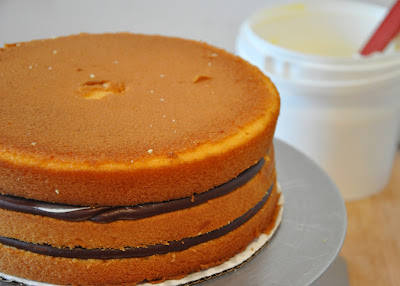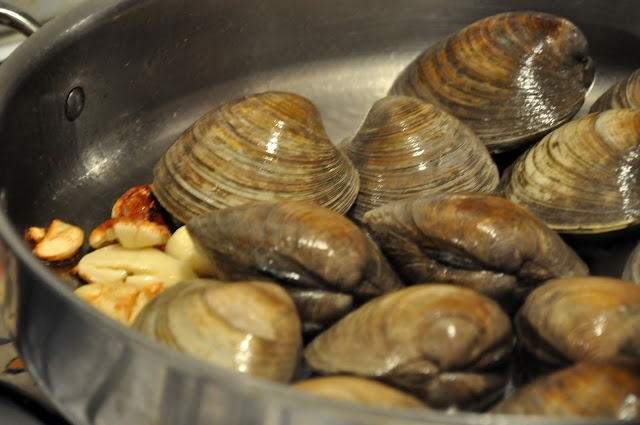Cooking, Serving and Eating were the first things I can remember learning were important- the pillars of family life. Being a good Indian daughter meant I was making tea in the microwave just after I was walking and talking- pouring milk into the cup until the liquid matched the color of my skin, concentrating with my whole body so I wouldn’t spill a single drop as I made the long journey from the kitchen to the living room where my grandfather reclined in his big chair, and waiting with tingling anticipation as he lifted the cup to his lips. And when, after slurping up his first sip, he would let out a satisfied sigh and turn to me with a smile saying, “Ahh, just the way I like it!” …well, there was no better feeling in my little girl world.
My earliest memories involve breathing in the warm, starchy mist that comes off a pot of rice the first time the lid is lifted off, jumping at the punchy hiss-and-whistle of the pressure cooker blasting steam clouds around my grandmother’s kitchen, and practicing rolling rotis and purees on a wooden board on the floor by the stove. Tried as I might, I could never get them as perfectly round as she did with just a few expert passes under the rolling pin.
Spending time at her feet while she worked at the stove, I soon discovered that cooking was like magic and my grandmother was the magician. Only she could take a doughy raw lump like the one she gave me to practice on and turn it into something delicious and wonderful, or so I was convinced.
By the time I was 8, I had graduated to assistant fry cook. I would perch on my little stool in front of the stove, my hands clasped behind my back as she slid a disc of soft dough down the side of the pot, her other arm gently blocking my way (though I had already gained a fearful respect for the hot oil.) My slotted spoon at the ready, I watched with delight as the tiny bubbles started to form on the pale dough. Suddenly, the puree would float up to the surface, the top alive with bursting bubbles. Then it was my turn to take over. While my grandmother went back to the six things she was inevitably doing at once, I slowly moved the disc around in the hot oil just as she had showed me until the pillow of dough puffed up like a tight drum. Then I would press down on it, pushing it back under the bubbling oil, my heart dancing along with the satisfying sound of sizzling, my mouth watering with the smell of browning dough. I gently turned the puree until both sides were the right color, then fished out the shiny fried dough and set it on a plate lined with paper towels. That first puree always had my name on it, but I had to fight my impulse to tear right into it knowing that it was too hot to handle. Finally, when I couldn’t hold out any longer I would take the golden puff in one hand and pop it with my other finger, inhaling with a smile as the puree blew its first and last breath onto my face.

The kitchen was easily my favorite room in the house and I tried to spend as much time there as possible, (still true!) Activities were staunchly divided across gender lines: the women and girls in the kitchen and dining room table, peeling, chopping and chattering- the men in the TV room watching tennis, drinking tea and eating peanuts. And no matter where the boys were- outside or upstairs or in the basement- they were making a racket and causing trouble. For my part I was never happier than when I was with the girls in the kitchen, snapping the tops off green beans or picking cilantro leaves, never more proud than when my grandmother announced to our dinner guests that I had fried the golden purees. So from the beginning, there was food. And not just eating it (which I was very fond of), but making it, presenting it, and watching other people eat it.
Now I look back at those happy afternoons spent in the kitchen and I wonder what it will be like for my unborn daughter. I am the one of the first generation of my family to be born in the US and I’ll always identify myself as an American, but I have never been in doubt of my Indianness- I never had to be. I have a name no one can pronounce the first time. I grew up absorbing the smells and sounds of my mother country all around me: hearing Aunties gossip in Hindi and going to the temple with Uncles, sitting cross-legged on the floor next to my cousin-sisters and brothers, eating with my fingers. But now that I’m grown up, I don’t speak any Hindi and I don’t go to the temple and I almost never eat with my hands unless I’m holding a sandwich. And having just married a white-boy, well I wonder how I am supposed to pass on that Indianness to my kids.
The best answer I have is to go back to the food. I have every confidence in my green coconut curry and my garlicky pesto (probably because I don’t have a Thai or Italian grandmother); but I have never be fully satisfied with the Indian dishes I try to make, knowing I could always get a better beans bhaji or palak paneer at home. But now that I’ve started thinking about a home of my own, I realize it’s on me to fill that home with the smells of cooked daal and sputtering cumin seeds- so my daughter knows something about being Indian, so she can make tea and roll rotis and take over as the best little puree fryer this side of the Ganges.
So, armed with my grandmother’s masala dabba and the memories of watching my mother make hundreds of Indian meals, I am determined to expand my repertoire to include some of the home-cooked dishes I grew up loving to eat.
You can find a million recipes out there for Palak Paneer and no two are exactly alike. Some will require you to blanch the spinach and some will use frozen, some call for buttermilk and others want sour cream, and some like it spicy while others prefer it sweetened with tomatoes. But that is the wonderfully liberating thing about home-cooked Indian food: the same dish will taste different in every household, depending on the cook. I’ve just been making it up as I go along and hoping for the best!
 Palak Paneer
Palak Paneer
1 block paneer, cubed*
1 t cumin seeds
½ t mustard seeds
1 T ginger/garlic paste*
1 onion, diced
2 tomatoes, diced
2 bunches fresh spinach, cut into shreds
¼ c plain yogurt
¼ t turmeric
oil, salt
*It’s tough to find fresh paneer, but you can find frozen blocks of it in most Indian groceries. Let it defrost in the fridge overnight, or for a few hours at room temp.
*You can buy prepared ginger/garlic paste at the store, or make your own and keep it in the fridge to use in stir fries, omelets, curries… whatever! Puree ginger and garlic in roughly a 1 to 1 ratio with a pinch of salt.
1. Coat the bottom of the pan in oil and fry the paneer until the cubes are brown on two (or more) sides. Remove the paneer from the pan and set aside on a paper towel.
2. On medium-high, heat some more oil in the pan then add the cumin and mustard seeds- they should sputter in the hot oil for a minute. Then add the ginger/garlic paste and fry for another minute.
3. Add the onion to the pan with a pinch of salt and sauté until they have softened, then add the diced tomato and cook for a few minutes more until the tomatoes have broken down.
4. Add the shredded spinach to the pan and toss with the tomato/onion mixture, then add the yogurt and combine. Add a splash of water and cover the pan, turning down the heat to med-low. Allow the spinach to steam for 3-4 minutes.
5. Once the spinach is wilted, use a food processor or stick blender to puree the mixture to your liking. I prefer a bit of texture so I left it chunky. If you want a smoother texture you can blend it more.
6. Return the puree to the pan and add the paneer cubes and turmeric powder. Taste for salt and spices- you can always add more yogurt or ground spices at this point. Cook for 5-10 minutes on medium-low heat to incorporate all the flavors.
Serve over rice (or quinoa) with cool yogurt and slices of cucumber on the side.
Want to see more attempts at Indian recipes? Leave a comment and let me know!




















































